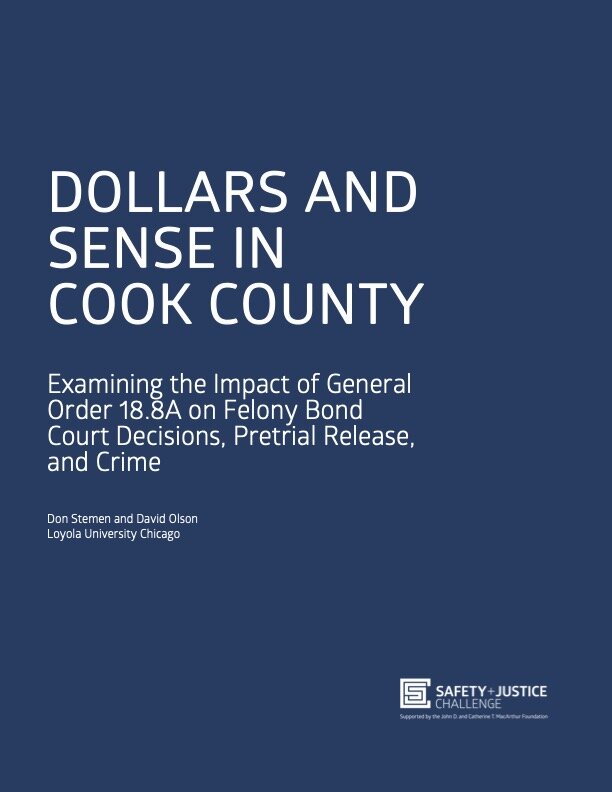Dollars and Sense in Cook County: Examining the Impact of General Order 18.8A on Felony Bond Court Decisions, Pretrial Release, and Crime
By Don Stemen and David Olson
Bail reform efforts across the United States have accelerated in recent years, driven by concerns about the overuse of monetary bail, the potentially disparate impact of pretrial detention on poor and minority defendants, and the effects of bail decisions on local jail populations. Proponents of bail reform advocate for reducing or eliminating the use of monetary bail, arguing that many defendants are held in jail pretrial solely because they cannot afford to post bail. Opponents counter that reducing the use of monetary bail or increasing the number of people released pretrial could result in more defendants failing to appear for court hearings (FTAs) or committing crimes while on pretrial release. Evaluations of recent bail reform efforts indicate that these efforts have not been associated with increases in new criminal activity….. A debate has played out in the media regarding the link between GO18.8A, the types of individuals released pretrial, and the number and percent of individuals charged with a new crime while on pretrial release. The debate centers around an evaluation of GO18.8A conducted by the Office of the Chief Judge (OCJ).5 The OCJ’s evaluation found that the number and percent of felony defendants released pretrial increased after GO18.8A but that the percent of felony defendants charged with a new crime while on pretrial release was similar before and after GO18.8A. Subsequent analyses by the media6 and academics7 suggested that the OCJ’s evaluation underestimated the percent of defendants charged with a new crime after GO18.8A. …. These critiques suggested that GO18.8A may have led to an increase in new criminal activity of those released pretrial and contributed directly to increases in crime in Chicago and Cook County. These subsequent analyses, however, also suffer from methodological problems similar to those in the OCJ’s evaluation. By relying on the same public data collected and distributed by the OCJ, these analyses were unable to correct for the critiques made of the OCJ’s analyses – namely a truncated follow-up period and a failure to account for seasonality – without making assumptions about, and estimations of, underlying recidivism rates of those released.8 More importantly, the analyses were unable to verify or refute the OCJ’s analyses of bond court decisions, release rates, or new criminal activity through the independent analysis of defendant- and charge-level court or jail data. As a result of these methodological shortcomings and contradictory findings, the actual impact of GO18.8A remains unclear. ….
Chicago: Loyola University Chicago, 2020. 34p


